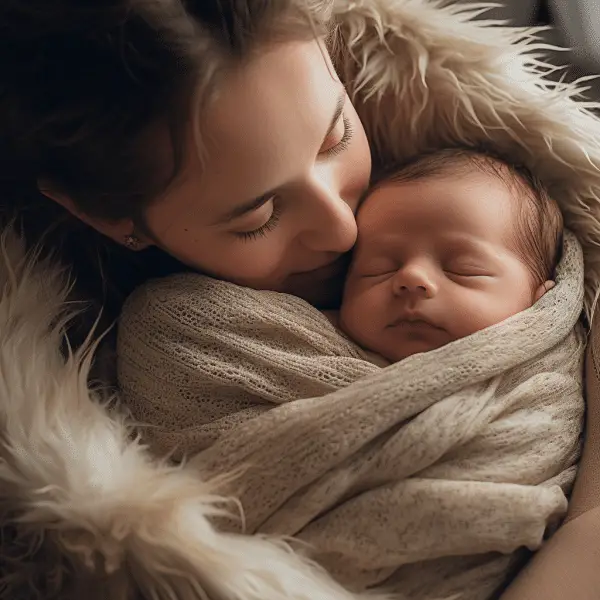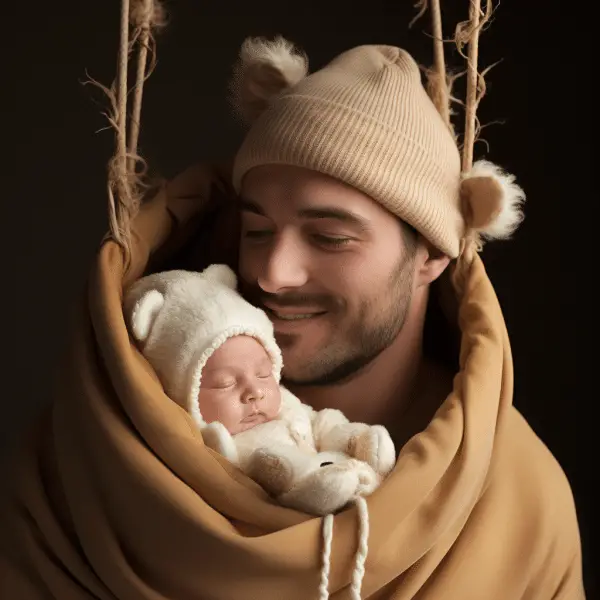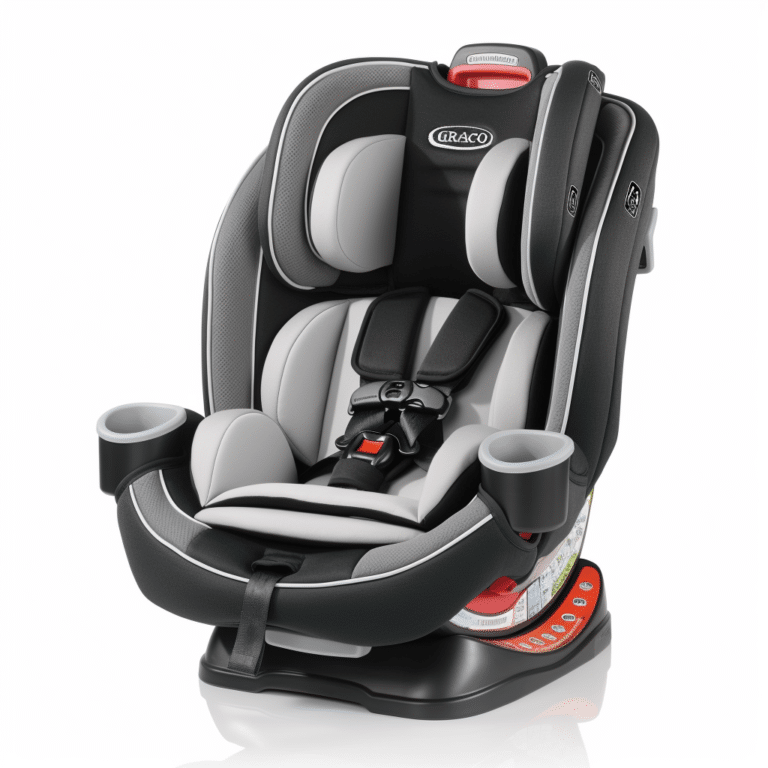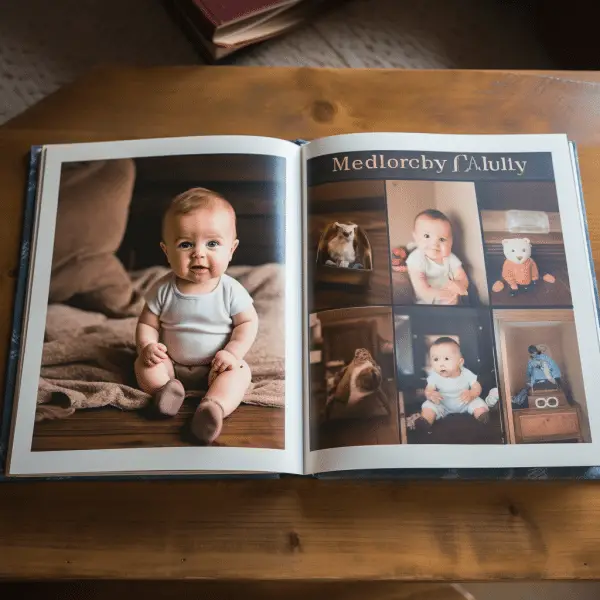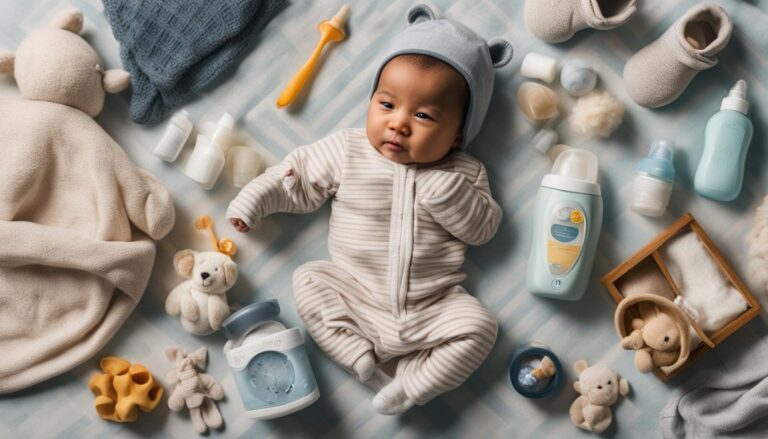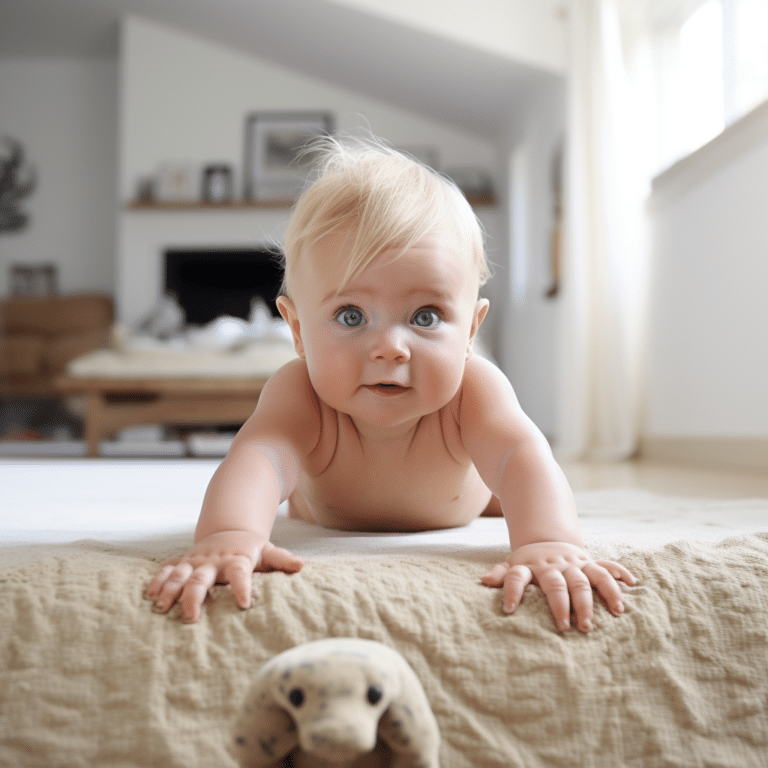Baby Safety and Well-being for New Parents
Baby Safety and Well-being becoming a new parent is both exciting and challenging, and one of the primary concerns for parents is ensuring the safety of their baby. In this comprehensive guide, I will provide essential tips and advice for new parents on how to keep their baby safe and secure. From car seat safety to baby-proofing your home, these tips will help you navigate the journey of parenthood with confidence and peace of mind.
Key Takeaways:
- Implement baby-proofing measures to create a safe environment for your baby at home.
- Choose the right car seat for your baby’s age and weight, and ensure it is properly installed.
- Minimize distractions while driving and take precautions to prevent accidental car abandonment.
- Practice safe bathing practices and always supervise your baby during bath time.
- Create a safe sleep environment by placing your baby on their back and removing any potential hazards.
Infant Car Seat Safety
When it comes to infant car seat safety, there are a few key factors to consider: choosing the right car seat and ensuring proper installation. Selecting the appropriate car seat for your baby’s age and weight is crucial to ensure their safety during any car journey. It’s essential to follow the guidelines set by the American Academy of Pediatrics and purchase a new car seat. If you’re considering a used car seat, make sure it has never been involved in an accident. Your baby’s safety is worth investing in a new car seat.
| Key Points | Importance |
|---|---|
| Choosing the right car seat | Ensures optimal protection and comfort for your baby |
| Proper installation | Reduces the risk of injuries in case of an accident |
Once you have selected the appropriate car seat, it’s crucial to install it correctly. Improper installation can compromise the safety of your baby in the event of a collision. To ensure proper installation, it is highly recommended to schedule a car seat inspection with a certified Child Passenger Safety Technician. These experts can provide hands-on assistance and guidance, ensuring that your car seat is securely and safely installed. Taking this extra step will give you the peace of mind that your baby is protected while on the road.
“Choosing the right car seat and installing it correctly are essential for the safety of your baby during car journeys. Don’t compromise on their well-being – invest in a new car seat and seek professional assistance to ensure proper installation.”
Baby Safety in the Car
When it comes to driving with your baby, the top priority is ensuring their safety. By following a few simple guidelines, you can minimize distractions and prevent any accidental car abandonment. Here are some key tips to keep in mind:
- Stay focused on the road: Avoid turning around to look at your baby while driving. Wait until you are fully stopped to give them any attention.
- Prevent distractions: Keep your eyes on the road and avoid using your phone or engaging in any other activities that may take your attention away from driving.
- Use reminders: To prevent accidentally leaving your baby in the car, try keeping your purse, cell phone, or any other essential items in the back seat as a reminder.
By taking these precautions, you can ensure that your baby stays safe and secure while on the road. Remember, your undivided attention is crucial for safe driving with a baby. Prioritize their well-being above all else.
| Safe Driving Tips with a Baby | Preventive Measures |
|---|---|
| Stay focused on the road | Avoid turning around to look at your baby until you are fully stopped. |
| Minimize distractions | Avoid using your phone or engaging in any other activities that may take your attention away from driving. |
| Use reminders | Leave your purse, cell phone, or other essential items in the back seat as a reminder to check on your baby before leaving the car. |
Safe Driving with a Baby: A Parent’s Responsibility
As a responsible parent, it is your duty to ensure the safety of your baby, even on the road. Safe driving practices, such as minimizing distractions and preventing accidental car abandonment, are crucial for protecting your little one. By taking these simple yet effective measures, you can enjoy a safe journey with your baby and have peace of mind knowing that their well-being is your top priority.
Baby Bath Time Safety
Bath time is a special moment for parents and babies, but it’s crucial to prioritize safety to prevent accidents and ensure a positive experience. By following safe bathing practices and taking necessary precautions, you can create a secure environment for your baby.
Supervision
One of the most important aspects of baby bath time safety is constant supervision. Always stay within arm’s reach of your baby and never leave them unattended in the tub, even for a few seconds. It’s essential to remain focused and attentive throughout the entire bathing process.
Preventing Drowning
Drowning is a serious risk for babies during bath time, so it’s crucial to take preventive measures. To reduce the risk of accidents, use a slip-resistant infant bathtub and fill it with warm, not hot, water. Test the water temperature with your elbow or a bath thermometer to ensure it’s comfortable for your baby. Remember, babies have sensitive skin, so avoid using excessive soap or bath products that could cause irritation.
Additionally, it’s important to drain the tub immediately after use. Leaving any amount of water in the tub can pose a drowning hazard if your baby accidentally falls in. Consider keeping the bathroom door closed or using a baby gate to prevent access to the bathroom when bath time is over.
Table: Safety Tips for Baby Bath Time
| Safe Bathing Practices | Preventive Measures |
|---|---|
| Always stay within arm’s reach of your baby | Use a slip-resistant infant bathtub |
| Never leave your baby unattended in the tub | Fill the tub with warm, not hot, water |
| Drain the tub immediately after use | Test the water temperature before bathing |
| Keep the bathroom door closed or use a baby gate |
By following these safe bathing practices and preventive measures, you can help ensure a secure and enjoyable bath time experience for your baby. Remember, accidents can happen in an instant, so it’s essential to stay vigilant and prioritize your baby’s safety at all times.
Baby Sleeping Safety
When it comes to ensuring the safety of your baby during sleep, there are several important practices to follow. By implementing safe sleep practices, you can reduce the risk of Sudden Infant Death Syndrome (SIDS) and create a secure sleep environment for your little one.
Creating a Safe Sleep Environment
Creating a safe sleep environment starts with the right sleeping position. Always place your baby on their back to sleep, as this has been shown to reduce the risk of SIDS. Additionally, it is crucial to use a firm, flat mattress with a fitted sheet to provide a safe sleeping surface for your baby.
Avoid letting your baby sleep on a couch or armchair, as these surfaces can pose suffocation hazards. Keep loose blankets, pillows, stuffed toys, and other soft items out of the crib to further reduce the risk of accidental suffocation or entrapment.
Reducing the Risk of SIDS
In addition to safe sleep practices, there are other measures you can take to reduce the risk of SIDS. One such measure is giving your baby a pacifier before bedtime. Studies have shown that pacifier use can significantly lower the risk of SIDS. However, if you are breastfeeding, it is advisable to wait until breastfeeding is well-established before introducing a pacifier.
It’s also important to ensure that your baby’s sleep environment is free from tobacco smoke, as exposure to smoke has been linked to an increased risk of SIDS. Make sure that anyone who cares for your baby understands the importance of a smoke-free environment.
| Safe Sleep Practices | Unsafe Sleep Practices |
|---|---|
|
|
By following these safe sleep practices and taking the necessary precautions, you can help protect your baby and promote a safe and sound sleep environment.
Infant Feeding Safety
When it comes to feeding your baby, whether through breastfeeding or bottle-feeding, safety should be a top priority. By following safe practices, you can ensure that your baby receives proper nutrition while minimizing the risk of accidents or health concerns.
Safe Breastfeeding Practices
If you choose to breastfeed your baby, there are a few important guidelines to keep in mind. Firstly, ensure that your chest area and nipple are clean before each feeding. This can help prevent the transfer of any harmful bacteria to your baby. Additionally, make sure to wash your hands thoroughly before every nursing session to maintain proper hygiene.
Proper Milk Storage
When storing breast milk, it’s essential to follow the recommended guidelines to maintain its safety and quality. Use sterilized bottles or storage bags specifically designed for breast milk. Label each container with the date and time of pumping to ensure that you use the oldest milk first. Store the milk in a refrigerator or freezer at the appropriate temperature to prevent bacterial growth. If you have any concerns or questions about milk storage, consult with a healthcare professional.
Bottle-Feeding Precautions
If you are using formula or supplementing with bottle-feeding, there are certain precautions to take to ensure your baby’s safety. Never prop the bottle in your baby’s mouth, as it can increase the risk of choking. Instead, hold your baby in an upright position during feedings and maintain close supervision. Be mindful of your baby’s cues to avoid overfeeding, as this can lead to discomfort or other complications.
| Safe Breastfeeding Practices | Proper Milk Storage | Bottle-Feeding Precautions |
|---|---|---|
| Ensure clean chest area and nipple | Use sterilized bottles or storage bags | Never prop the bottle in the baby’s mouth |
| Wash hands before each feeding | Label containers with date and time | Hold baby in an upright position |
| Store milk at the appropriate temperature | Maintain close supervision during feedings |
By practicing safe feeding techniques, you can provide your baby with the nourishment they need while ensuring their well-being. If you have any concerns or questions about infant feeding safety, consult with your healthcare provider or a lactation consultant for personalized guidance.
Baby Toy Safety
When it comes to selecting toys for your baby, safety should be your top priority. Choosing age-appropriate toys and ensuring they meet toy safety standards is essential to keep your baby safe and prevent potential choking hazards.
Age-appropriate toys are specifically designed to suit your baby’s developmental stage and abilities. Toys that are too advanced may pose a choking hazard if they have small parts that can be easily swallowed. To ensure the toys you choose are safe, look for the age recommendation on the packaging or toy label.
Another important aspect of toy safety is ensuring that they meet the necessary toy safety standards. Look for toys that are labeled as meeting safety regulations such as ASTM F963 or CPSC guidelines. These standards ensure that the toys have undergone rigorous testing for safety and meet specific criteria.
It’s also crucial to regularly inspect your baby’s toys for any loose parts or sharp edges. If you notice any damage or potential hazards, remove the toy from your baby’s play area immediately. Storing toys in a safe place when not in use and keeping small objects like buttons, coins, and balls out of reach can also help prevent choking hazards.
Table: Age-Appropriate Toys
| Age Range | Types of Toys |
|---|---|
| 0-6 months | Soft toys, rattles, teething rings |
| 6-12 months | Stacking toys, shape sorters, sensory toys |
| 12-18 months | Push and pull toys, nesting cups, simple puzzles |
| 18-24 months | Pretend play toys, building blocks, musical instruments |
| 2-3 years | Art supplies, tricycles, interactive toys |
By following these guidelines and ensuring that your baby’s toys are age-appropriate and meet safety standards, you can provide a safe and stimulating play environment for your little one.
Section 8: Preventing Baby Choking
As babies become more curious and mobile, it’s crucial to be proactive in preventing choking hazards. By identifying and removing potential dangers from their environment, you can significantly reduce the risk of a choking accident. Here are some important tips to keep your baby safe:
Choking Hazards
- Regularly inspect your home for small objects that could be easily swallowed, such as coins, buttons, or small toy parts.
- Keep small objects, including those from older siblings’ toys, out of reach of your baby.
- Avoid giving your baby foods that pose a high choking risk, such as whole grapes, nuts, popcorn, or chunks of raw fruits and vegetables.
First Aid for Choking
Despite our best efforts, choking incidents can still occur. Knowing what to do in an emergency is vital. Familiarize yourself with infant CPR and take a course to learn the life-saving skills needed to help your baby in such situations. Here are some general guidelines to follow:
- Stay calm and assess the situation. If your baby is coughing forcefully, let them cough to clear the airway.
- If your baby is unable to cough or breathe, perform back blows or chest thrusts to dislodge the obstruction. These techniques can be learned in an infant CPR class.
- If the obstruction persists, call emergency services immediately.
Infant CPR
“Taking an infant CPR class is one of the most valuable investments you can make as a parent. It equips you with the knowledge and confidence to respond effectively in an emergency. Remember, time is of the essence when it comes to choking incidents, so be prepared and take action promptly.” – Dr. Emily Thompson, Pediatrician
| Emergency Phone Numbers | Location |
|---|---|
| Emergency Services | 911 |
| Poison Control Center | 1-800-222-1222 |
| Local Hospital | Insert your local hospital’s phone number |
By proactively preventing choking hazards and being prepared with the knowledge of first aid techniques, you can help ensure the safety of your baby. Always stay vigilant and create a safe environment for your little one to explore and grow without unnecessary risks.
Baby Changing Table Safety
When it comes to changing your baby’s diaper, safety should always be a top priority. A changing table provides a designated area for this task, but it’s important to follow safe practices to prevent falls and accidents. By staying attentive and taking the necessary precautions, you can ensure a safe changing experience for your baby.
Safe Changing Table Practices
Here are some essential tips for safe changing table practices:
- Choose a sturdy changing table with a safety strap or guardrails to prevent your baby from rolling off.
- Always keep one hand on your baby while they are on the changing table to ensure they don’t fall.
- Keep all diapering supplies, such as diapers, wipes, and ointments, within arm’s reach to avoid leaving your baby unattended.
- Never turn your back on your baby while they are on the changing table, as accidents can happen in an instant.
- Consider using a waterproof changing pad on top of the changing table for easy cleanup.
By following these safe changing table practices, you can minimize the risk of falls and create a secure environment for your baby during diaper changes.
| Tip | Explanation |
|---|---|
| Choose a sturdy changing table | Ensure the changing table is stable and has safety features like a strap or guardrails. |
| Keep one hand on your baby | Always keep one hand on your baby to prevent them from rolling off the changing table. |
| Keep diapering supplies within reach | Have all necessary supplies nearby to avoid leaving your baby unattended. |
| Never turn your back | Avoid turning away from your baby while they are on the changing table to prevent accidents. |
| Use a waterproof changing pad | Consider using a waterproof changing pad for easy cleanup. |
“A secure changing table, attentive caregiving, and having supplies within reach are essential for ensuring your baby’s safety during diaper changes.”
Remember, accidents can happen even in a controlled environment, so it’s important to stay vigilant and never leave your baby unattended on the changing table. By following these safe practices, you can create a safe and comfortable space for diaper changes and provide the best care for your baby.

Conclusion
As a new parent, ensuring the safety of your baby is a top priority. By following these essential baby safety tips, you can create a safe and secure environment for your little one. From car seat safety to baby-proofing your home, each aspect of baby safety plays a vital role in protecting your child.
Remember, every parent and baby are unique, so trust your instincts and seek support when needed. It’s important to stay informed about the latest safety recommendations and guidelines. Stay up to date with child safety measures and regularly inspect your home for potential hazards.
Baby-proofing your home is an ongoing process, as your baby grows and becomes more curious. Make sure to secure furniture, cover electrical outlets, and keep small objects out of reach. Supervise your baby at all times and never leave them unattended, especially near water or on elevated surfaces.
By being proactive and taking the necessary precautions, you can provide a safe and nurturing environment for your baby. Congratulations on your new journey of parenthood, and remember that keeping your baby safe is a continuous effort that will bring you peace of mind.
FAQ
What is the most important aspect of baby safety?
Ensuring that your baby is properly secured in a car seat.
How do I choose the right car seat for my baby?
It is crucial to choose a car seat based on your baby’s age and weight.
Do I need to buy a new car seat?
The American Academy of Pediatrics recommends buying a new car seat unless you are certain the used seat has never been in an accident.
How can I ensure that the car seat is installed correctly?
Scheduling a car seat inspection with a Child Passenger Safety Technician can provide hands-on assistance with car seat installation.
How can I minimize distractions while driving with my baby?
Keep your eyes on the road and avoid turning around to look at your baby until you are fully stopped.
How can I prevent accidentally leaving my baby in the car?
Leaving your purse or cell phone in the back seat can serve as a reminder not to forget your baby in the car.
What precautions should I take during bath time?
Use a slip-resistant infant bathtub, fill it with warm water, and always stay within arm’s reach of your baby. Never leave them unattended in the tub.
How should I create a safe sleep environment for my baby?
Always place your baby on their back to sleep, use a firm mattress with a fitted sheet, and keep loose blankets, pillows, and stuffed toys out of the crib.
How can I ensure safe breastfeeding and bottle-feeding?
Clean your chest area and nipple before breastfeeding, wash your hands before a feeding session, and follow proper milk storage guidelines. When bottle-feeding, never prop the bottle in your baby’s mouth and be mindful of overfeeding.
How can I choose safe and age-appropriate toys for my baby?
Select toys made of natural materials or labeled as phthalate-free, PVC-free, and BPA-free. Regularly check toys for loose parts or sharp edges.
What measures should I take to prevent baby choking?
Regularly inspect your home for small objects that could be dangerous if swallowed and consider taking an infant CPR class to learn life-saving skills.
How can I ensure safe diaper changes on a changing table?
Use a sturdy changing table, always keep your hands and eyes on your baby, and keep all necessary supplies within easy reach to avoid leaving your baby unattended.
